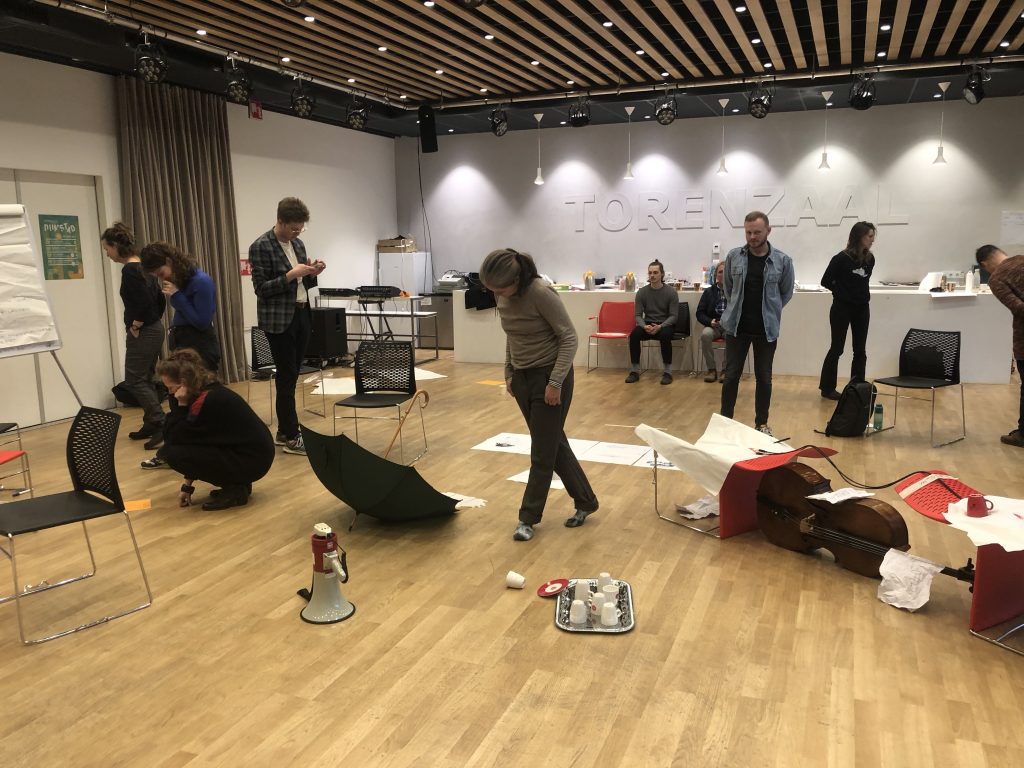Testimonies by former students
Francisca Snip:“What MMP (VMP) meant to me was a weekly feedback session, where I could share the seedlings of my work and let them be nurtured by the recognition, wisdom and inspiration of my fellow artists. This had a therapeutic effect on me.
I learned to be curious and interested in my work and the work of others, to see potential and quality in even the smallest draft, to let go of judgments and fears by acknowledging them- lessons that are of vital importance, not only in art, but in life.
The clear form of the lessons created the safe framework in which we could open up and dive deep into each other’s work and processes. What I learned and experienced during these lessons I will treasure and carry with me throughout the rest of my artistic career and life
Roosmarijn Tuenter: “Connection, inspiration, feedback. Talking about your work in a safe environment with no ego and great communication skills, that’s what MMP (VMP) is about. And by work I don’t mean finished work, but the process, the things you’re working on right now. Musically, personally. It turns out that these two things have a lot in common. The end goal is not to have a great, finished product. It’s about learning from your creative process, what it says about you as a person, a musician, a performer. We also spoke a lot about non-attached composing. This was an eye opener for me, since my creations were mainly meant to turn out into ‘the best thing I’d written thus far’. By letting go of this pressure, I could write and play in a more playful and ‘kind’ way, which was – of course – so much more fun! It opened a flow of creativity and the feeling that inspiration can be found everywhere.”
Hans Vermunt: “In the M3.0 department, musicians are trained to think and act like artists. In the practice of an artist, the actual making of art is only a small part of the practice of the artist. A lot of this practice consists of nurturing the artist’s mindset, taking time to reflect on whatever it is that is important to make at that time, for whatever reason. Other elements are seeing other art, talking to people, evoking playfulness etc. Somehow, actively doing nothing can really benefit these processes. This creative side has to be balanced with a more ‘professional; approach: showing up every day, doing the ‘work’, dealing with deadlines, working together with others. All of these processes together give a pretty good idea of what it is like to be a professional working artist. In MMP (VMP) there is a focus on these processes. Not only is there a weekly feedback round on your own work/process, but everybody is also invited to talk about the other students’ work. Somewhere during this course, I realized: the feedback I’m receiving now is the same kind of feedback I’ve given to others before, and the feedback I’m giving has been given to me before. Apparently, all of these artists go through similar phases in their creative processes, and by putting all of us together, it becomes possible to take a look at this process from a distance, putting everything into perspective. MMP (VMP) really helped me to get to know my own artistic processes much better. This has proven to be a very valuable skill in my professional life. Another thing that should not be overlooked: it is a very, very inspiring experience to get a peek in the creative processes of your peers. You get to see how they work, what they are dealing with, what inspires them. Often times, the group could hear the potential of an idea before the maker could. To be able to stay in a creative environment like this for a year is invaluable. We saw each other’s work from origin to presentation, showed vulnerability, and in the end, drove each other to excellence. I remember feeling very challenged by the MMP class, but it has also resulted in some of my most interesting work. I remember making location-specific performance art, composing a classical piano piece, doing a Dutch rap performance, and creating a land art piece.”
